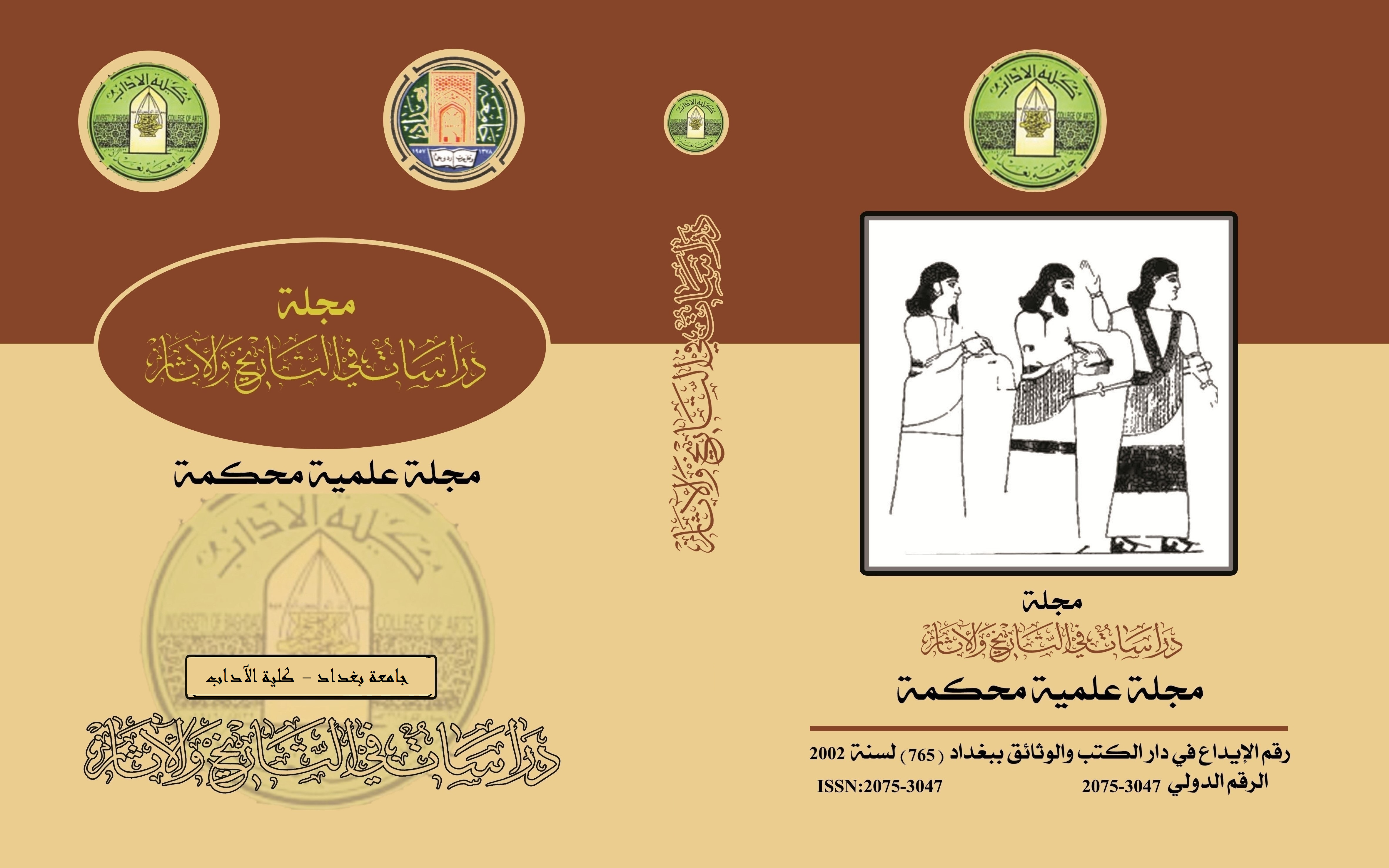Al-Andalus in the Writings of the French Orientalist School: Gustave Le Bon as a Mode
Keywords:
Al-Andalus, Gustave Le Bon, French Orientalist School, Islamic CivilizationAbstract
This research, titled "The Andalusian Lands in the Writings of the French Orientalist School: Gustav Le Bon as a Model," aims to explore the admiration and fascination of French Orientalists with Arab civilization in all its aspects. Gustav Le Bon, the renowned French historian and philosopher, highlighted the role of Islamic civilization in Europe and its profound influence on shaping European culture. Le Bon is considered one of the most prominent defenders of the contributions of Islamic civilization in science, arts, and literature during the Andalusian period, which lasted for about 800 years and deeply impacted the course of Western civilization.
In his writings, Le Bon sheds light on various aspects of Andalusian civilization, particularly scientific progress, the development of philosophy, medicine, engineering, and architecture. He points out that Muslims in Andalusia established a strong educational system and research institutions that were open to all groups, regardless of race or religion, which contributed to the flourishing of sciences and their dissemination in Europe through translation and transmission.
Le Bon also criticizes the conflicts and wars that led to the fall of Andalusia, emphasizing how these wars caused the decline of Islamic civilization in Spain, turning it into a forgotten history. He also praises the religious tolerance that prevailed during that period, where Muslims, Christians, and Jews coexisted peacefully, creating a fertile environment for intellectual and cultural exchange.
Le Bon summarized the impact of Andalusia on Europe as one of the brightest periods in history, marking the starting point of the European Renaissance..
References
1. أحمد بن محمد التلمساني المقري (ت 1041ه), نفخ الطيب من غصن الأندلس الرطيب وذكر وزيرها لسان الدين أبن الخطيب, تحقيق: أحسن عباس, (بيروت, 1968م).
2. عـبـد الـواحـد الـمـراكـشـي, الـمـعـجـب فـي تـلـخـيـص أخـبـار الـمـغـرب, مـطـبـعـة الاسـتـقـامـة, (القاهرة, 1949م).
المراجع
1. جامعة الدول العربية, الموسوعة الميسرة, معهد الدراسات العربية, (مصر, 1959م.
2. زيادي, محمد فتح الله, ظاهرة انتشار الإسلام وموقف بعض المستشرقين منها, دار الكتب الوطنية.
3. فروغ عمر, المستشرقون ما لهم وما عليهم, مجلة الاستشراق, دار الشؤون الثقافية العامة, السنة 1, العدد 1, (بغداد, 1987م).
4. محمد فاروق النبهاني, الاستشراق (تعريفه ومدارسه وأثاره) منشورات المنظمة الإسلامية للتربية والعلوم والثقافة, إيسكو, 1433ه/ 2012م.
5. ناجي عبد الجبار, تطور الاستشراق في الدراسة التراث العربي, الموسوعة الصغيرة, العدد (85), دار الجاحظ للنشر, (بغداد, 1981م).
6. نادر البير نصري, اهتمام المستشرقين بالفكر العربي الإسلامي القديم, مجلة الاستشراق, السنة 1, العدد 1, (بغداد, 1987م).
المصادر الأجنبية
1. خوسيه انطونيو كوندي, تاريخ حكم العرب في إسبانيا, ترجمة لارانيكو لافاليه, دار الكتب الوطنية, (أبو ظبي, 2014م).
2. زيغريد هونكة, شمس العرب تسطع على الغرب, ترجمة: فاروق بيضون وكمال شوقي, (بيوت, 1964م).
3. لوبون غوستاف, الآراء والمعتقدات, ترجمة عادل زعيتر, مؤسسة هنداوي للتعليم والثقافة, مصر, 2014م.
4. لوبون, غوستاف, السنن النفسية لتطور الأمم, ترجمة عادل زعيتر, مؤسسة هنداوي للتعليم والثقافة, مصر, 2014م.
5. لوبون, غوستاف, حضارة العرب, ترجمة عادل زعيتر, مؤسسة هنداوي للتعليم والثقافة, مصر, 2012.
6. ليفي بروفنسال, تاريخ إسبانيا المسلمة, ترجمة: أحمد مكمي الطاهر, دار المعارف, (القاهرة, 1979م).
7. م.م.ميسون نجم عبيد .م.م.مريم علاوي ,التطور الحضاري في بلاد الاندلس في كتابات المستشرقين الفرنسيين غوستاف لوبون انموذجا ,International journal of Rellgion,Q3, Transnational press London 2024,العدد11,ص8
8. ) Benoit Marpeau ، Gustave Le Bon ، parcours d ' un intellectuel (1841-1931) ، CnrsنEdition، Paris 2000، p 19.
Downloads
Published
Issue
Section
License

This work is licensed under a Creative Commons Attribution 4.0 International License.
Copyright and Licensing:
For all articles published in Journal of Studies in History and Archeology, copyright is retained by the authors. Articles are licensed under an open access Creative Commons CC BY 4.0 license, meaning that anyone may download and read the paper for free. In addition, the article may be reused and quoted provided that the original published version is cited. These conditions allow for maximum use and exposure of the work.
Reproducing Published Material from other Publishers: It is absolutely essential that authors obtain permission to reproduce any published material (figures, schemes, tables or any extract of a text) which does not fall into the public domain, or for which they do not hold the copyright. Permission should be requested by the authors from the copyrightholder (usually the Publisher, please refer to the imprint of the individual publications to identify the copyrightholder).
Permission is required for: Your own works published by other Publishers and for which you did not retain copyright.
Substantial extracts from anyones' works or a series of works.
Use of Tables, Graphs, Charts, Schemes and Artworks if they are unaltered or slightly modified.
Photographs for which you do not hold copyright.
Permission is not required for: Reconstruction of your own table with data already published elsewhere. Please notice that in this case you must cite the source of the data in the form of either "Data from..." or "Adapted from...".
Reasonably short quotes are considered fair use and therefore do not require permission.
Graphs, Charts, Schemes and Artworks that are completely redrawn by the authors and significantly changed beyond recognition do not require permission.
Obtaining Permission
In order to avoid unnecessary delays in the publication process, you should start obtaining permissions as early as possible. If in any doubt about the copyright, apply for permission. Al-Adab Journal cannot publish material from other publications without permission.
The copyright holder may give you instructions on the form of acknowledgement to be followed; otherwise follow the style: "Reproduced with permission from [author], [book/journal title]; published by [publisher], [year].' at the end of the caption of the Table, Figure or Scheme.














